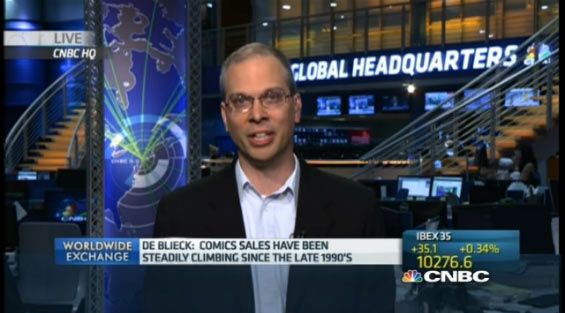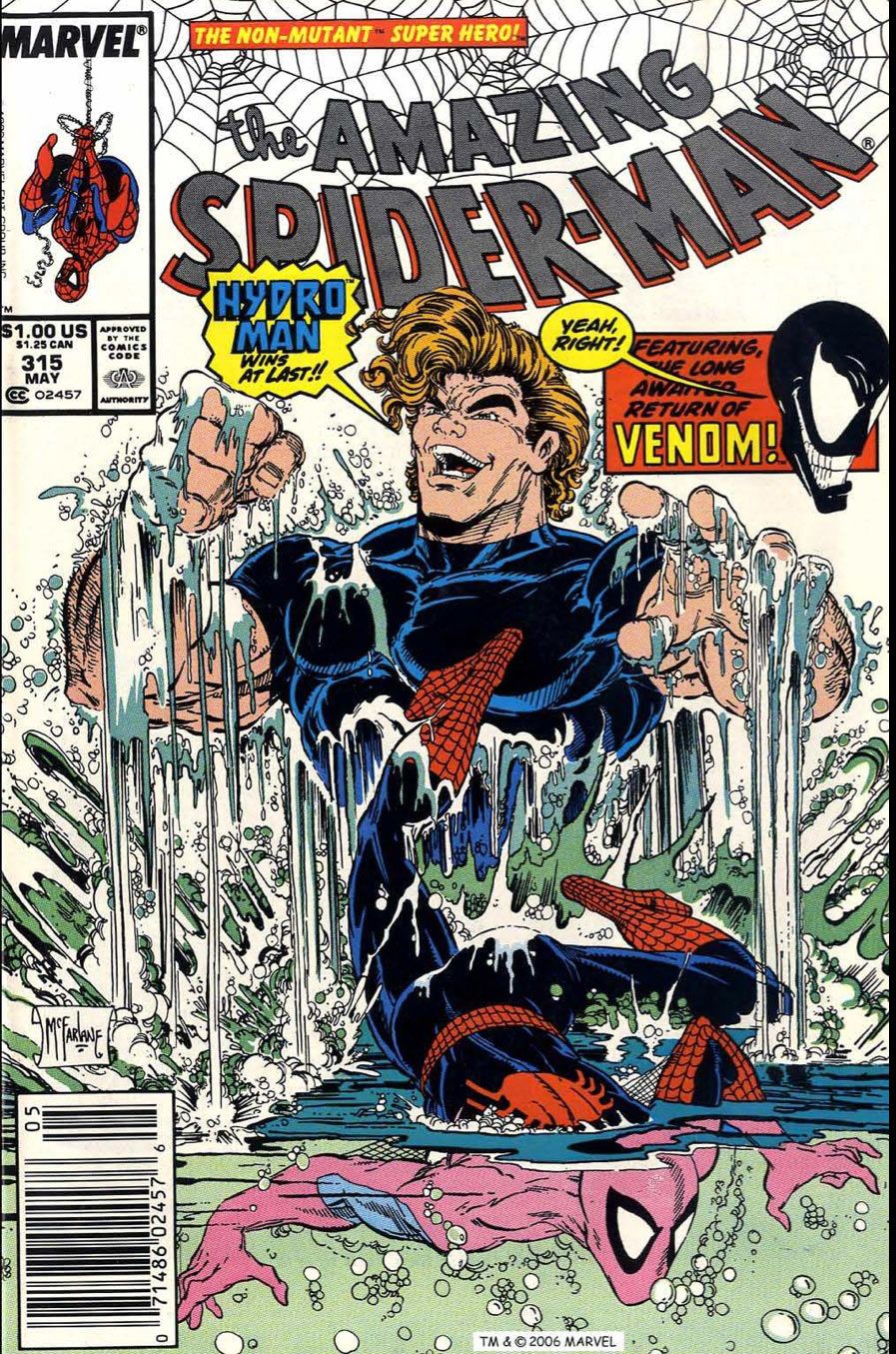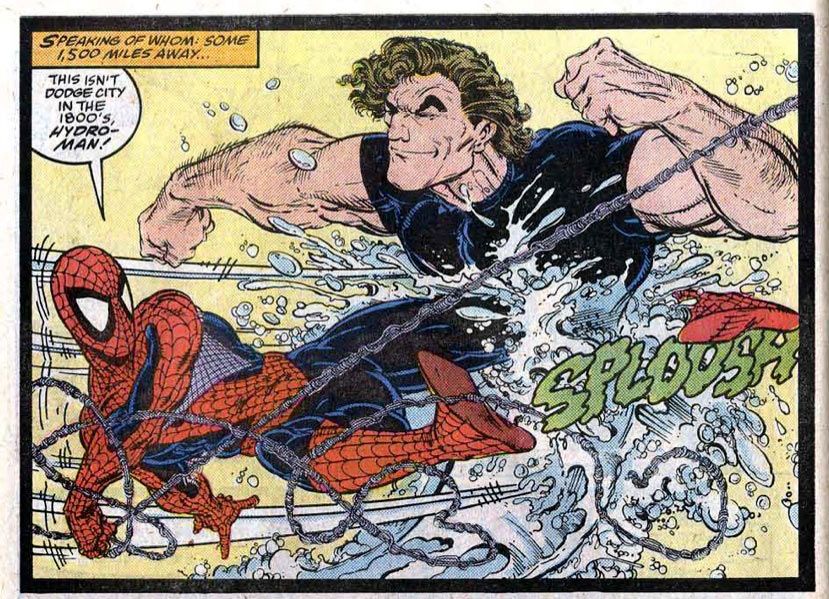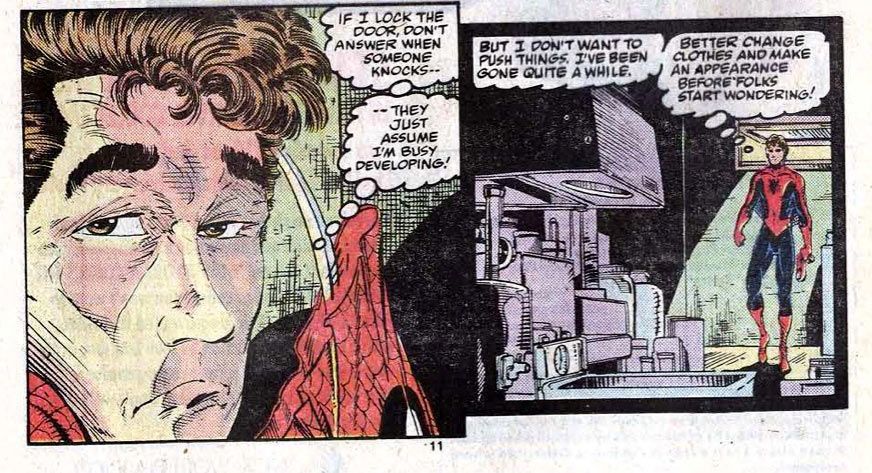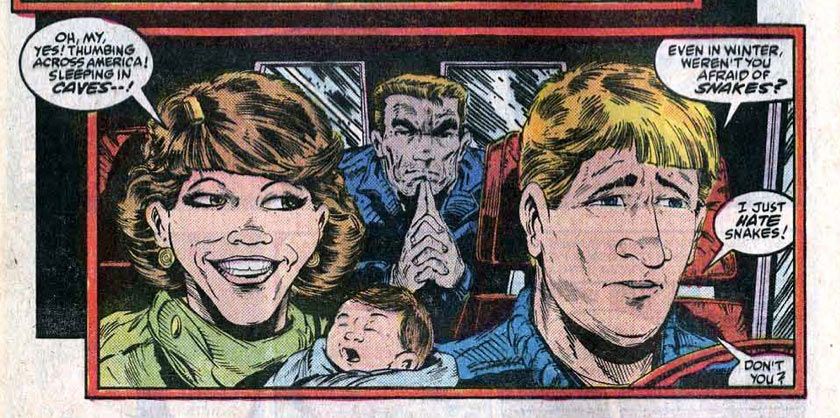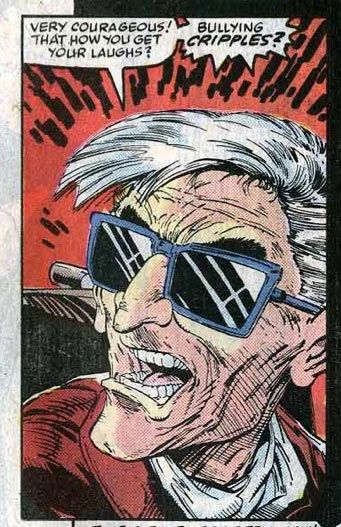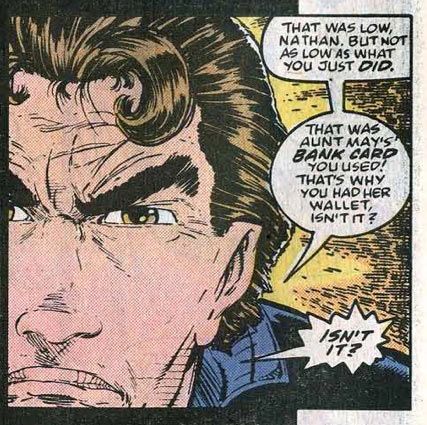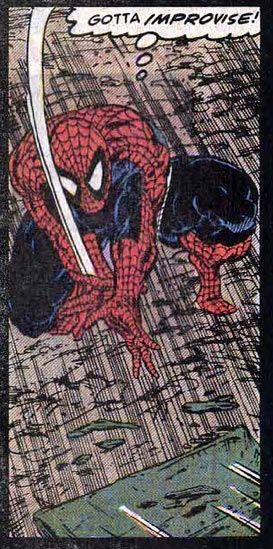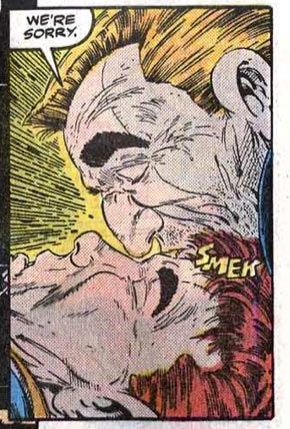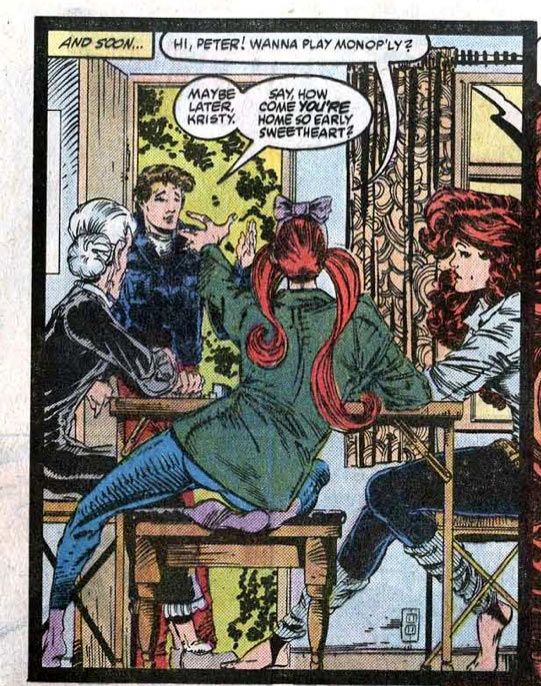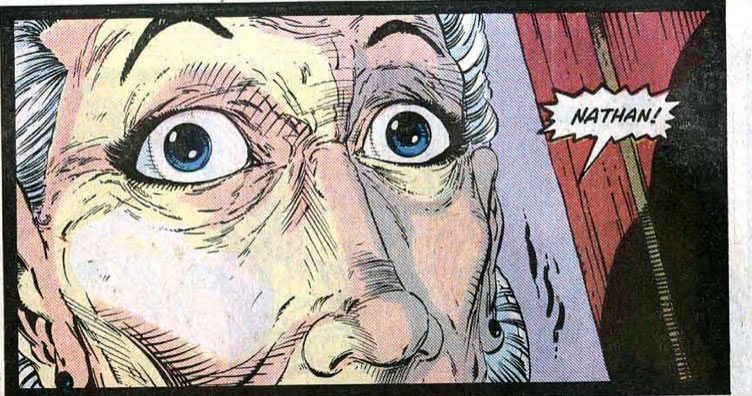PIPELINE GOES TELEVISION
Last Tuesday morning, I received an email from CNBC asking if I'd be available to make an appearance on their early morning show, "CNBC Worldwide Exchange," to talk about the state of the comics business. The topic came up with the then-impending eBay auction of "Action Comics" #1 for what is expected to fetch over $2 million.
I thought it over for an hour before deciding that, if nothing else, it would be an interesting life experience. If I failed miserably, nobody would notice because it's on at 5:20 a.m. If I did well, I have a video I can show off to friends and family.
The emails from the producers came out of London. Given the show's early time slot, it makes sense to produce the show from a place four hours ahead of New York time. It also meant I wouldn't be in studio with the host. I'd be alone with a camera, listening via an earpiece and hoping the delay wasn't too bad.
A quick volley of emails later, and they planned to send a car to pick me up at 4:15 a.m. You may think that's bad, but it's not too bad. I don't require too much sleep, so I could go to bed early and -- Wait. I had made plans to see "Guardians of the Galaxy" that night, and was not about to cancel on them.
So, yes, I got home from the movies at midnight, set my alarm for 3:30, and went straight to bed. I did live TV on just over three hours of sleep.
Sure enough, the car arrived on time and I got to the studio just before 5:00. The studio is in Englewood Cliffs, NJ, just across the Hudson River from Manhattan. It is the main CNBC studio you'd see on TV if you turned the station on at mid-day. When I was there, things were very quiet. The set was lit up, but all the desks in the bullpen were empty, save one or two.
I was led into a corner of the bullpen outside of where the main studio cameras would ever see me. They set me up at a desk about four or five feet in front of a camera, with two monitors on the right showing the live feed, and an LED panel of lights about two or three feet wide above it. The cameraman adjusted the camera and the stool I was sitting on to the right heights, put an ear piece on me, and I was left to wait for the spot to begin.
The camera guy, by the way, was wearing a Batman t-shirt. I knew I was amongst good people at that point.
The voice of the producer came in my ear piece first to double check the pronunciation of my name and then, after the commercial break ended, we were live on air.
You can watch the video here at CNBC's website.
I talked about the general state of publishing these days, what the digital market means for traditional paper comics, and how the prices of original art have gone up over the years. That last part you don't get to see on the web. For whatever reason, it didn't make the final cut for the online video. I imagine it's due to time. In watching it back, the host asked for a quick answer. I gave her a slightly longer one. Whoops.
It's a basic blimp-level view of the industry, the kind of stuff we talk about inside our bubble all the time, only with the kind of extreme time limit this format of television programming gives you. I enjoy a good challenge, though. Talking to people afterwards outside of the comics industry, it seems like they "got it," so I think I did my job.
Once the appearance was over, they removed my earpiece and showed me the door. I was out of the building and back on the road home in two minutes. I spent maybe a half hour in the building, total, and then went back to my 40 minute trip home.
It was awesome. I'd do it again in a heartbeat.
THINGS I LEARNED
- I will never make fun of anyone doing live TV who accidentally chooses the wrong word. It happens. It's very easy. In watching the video back, I noticed a couple of wrong words I used that I wished I could have edited. They weren't anything bad, but they weren't the words I was looking for. When the host referred to the "comics book market," I didn't even catch it. Someone who watched the video hours later had to point it out to me. There's so much to keep track of when doing live TV, it's easy for any one thing to distract you and make you miss something. It's tough to continuously fire on all cylinders. I can't imagine how difficult that is for a host who needs to change topics wildly every five or ten minutes.
- Peripheral vision is a must. Either that, or shut it down entirely. There is a delay between the audio and video feeds. I can't even tell you which ones comes behind the other. I tried not to pay attention. If you watch the monitor screens to the right of the camera, it'll throw you off when the audio coming in your ear isn't in sync. Also, you look silly looking just off-camera. Look straight ahead at all times. Use your peripheral vision to know when you're in a one-shot, two-shot, or three-shot. (I'm sure there's a different technical term for that split screen, but I think you get what I mean here.)
- It's easy to talk about something you know pretty well. I've been writing about comics for the last 17 years. If I can't talk about a general subject like "The Business of Comics" off the top of my head by now, I'm not paying attention. This being an appearance on a show outside the world of comics, I knew the view I'd be presenting was pretty high level. I wouldn't need to get caught up in the details of the history of the Direct Market or the breakdown of sales within the Direct Market or profit margin details.
- I did do one bit of research. I dug up Comichron and ICV2's guesstimate on the size of the comics publishing industry and had some of those stats in mind in case I needed them. I used one vague number in my first answer.
- People smile all the time on television for no apparent reason. It looks better, friendlier. I watched some YouTube videos before I went on the show to get a feel for what the show was like, how things worked, and what guests did and said. I noticed that the guests who smiled while listening to the question seemed more welcoming. I gave it a try. I didn't smile enough, but I didn't give them the concerned serious face with the wrinkled brow. I'll take that as a minor victory.
- I tilt to the right and I close my eyes way too often. I knew about the latter thing but never did anything about it. Now I feel the need to. If we have a conversation at any point in the next few months and I appear to be staring wide-eyed at you, it's only because I'm trying my best not to look down or away from you.
- I want to do more. That part feels out of my control, but I know I'd answer even more quickly next time.
AMAZING SPIDER-MAN #315: "A Matter of Life or Debt"
Venom is making his way back to Spider-Man. And one of Aunt May's boarders is in trouble due to his gambling habits.
The issue opens with Venom breaking out of The Vault, the jailhouse for superpowered baddies in the Marvel universe at this time. Venom has to kill one guard and scare half to death the next to do it, but he does feel remorse in some small way. He's not all together a bad guy. Eventually, after being too popular, they'll even convert him into being a good guy -- a "lethal protector," if you will -- and give him his own series. For now, he's obsessed with hurting Spider-Man and woe be to anyone who gets in his way.
Spider-Man, meanwhile, is busy fighting Hydro-Man at a construction site somewhere for attempting to steal a payroll truck. As usual for David Michelinie's writing at the time, Spider-Man is using physics and chemistry in his fight against a bad guy whose superpowers should be enough to overwhelm him. It's a throwaway sequence, but one that gives McFarlane a chance to play to his strengths with a super powered fight scene. Can't complain about that. All of those thing black lines work well with a water-powered villain.
Back to the civilian life, Peter Parker is working harder than ever to score good pictures to sell to the Daily Bugle. It's slightly amusing to see Peter's dark room in his aunt's basement. This comic doesn't seem all that old, but those dark rooms are basically extinct at this point.
The main story of this issue is from one of Aunt May's boarders, Nathan, whose gambling problem has put him in a deep hole with the mob. They're ready to collect, and Peter wants to step in to help. He does, of course, as Spider-Man knocks out three bad guys in sequence for the second issue in a row.
Nathan is resourceful. Even from his wheelchair, he holds off the mob guys for a short time with a bag of flour, a can of Raid, and a steak knife. That buys enough time for Spider-Man to step in and clear things up. It's never quite that simple, though, as Nathan relapses shortly thereafter, continuing Peter Parker's losing streak.
The book ends with a tease of Venom coming to town that leads me to a eureka moment with McFarlane's art. Finally, the part of it that bothers me became crystal clear in this panel:
At first, it's a pretty simple scene: A younger couple have picked up a hitchhiker and are driving him across the country in what appears to be a conversion van or an ice cream truck. It's tough to tell from the previous panel.
Clearly, this couple is based on two real people. I don't know who they are or if Todd McFarlane has ever said it, but they do have the distinct look of being a caricature of some specific people.
Second, the baby is microcephalic. Even newborn babies have bigger heads than this.
Third, the baby is not in a baby seat. He's in his mother's arms. In the front seat. I'm not sure where the state of the law was in 1989 regarding this. Was it still OK then? I didn't think so...
Fourth, that car has a narrow front seat. It appears the husband and wife are fused at the shoulder. They're so close together that his shoulder is, at best, slightly overlapping hers.
Fifth, I don't care how friendly you are, but if you have a newborn baby in your arms in the front seat of a tiny vehicle of some sort on a snow-encrusted roadway, don't pick up hitchhikers! It's a series of bad decisions for this family, from the moment they bought their car to the day they brought their baby home from the hospital -- no doubt in mom's arms in the front seat, without a seat belt.
Oh, yeah, nobody on this page is wearing a seat belt, either.
Looking at this panel too closely finally made clear to me what the biggest problem of Todd McFarlane's art is. His style is too cramped. It can feel claustrophobic at times. Look closely at any panel and you'll see that it's arranged to carry the bare minimum amount of data. The "camera" is zoomed in to show the people that are talking and their physical relationship with each other. There's not much wiggle room around them. The panel often cuts them off in random ways.
I think that's part of the reason the pages with splashy images of Spider-Man swinging across the city stick out so much. Those are the times when McFarlane loosens up. He draws full backgrounds and full characters, with plenty of negative space around them. Otherwise, most of the action happens right in your face, with characters close up to the reader in the front plane.
Take a look at some sample panels from just this issue:
You could run a funny caption next to 90% of the panels in this story. Flipping back to previous issues, it's just as bad.
McFarlane's storytelling has never been exactly straightforward or textbook. He came into the industry, shining with his non-standard panel layouts. He toned those down at Marvel and began to rely on his artistic style to shine. By the time he got this deep into his "Amazing Spider-Man" run, the strength of his art was often dictated by the script for the issue combined with the release schedule. The summer bi-weekly run messed with his potential and, as we'll see soon enough, would lead to fill-in artists, not just fill-in inkers. But the pages with superheroes just sang.
But there's a recurring and never-ending issue in this run with the way he laid out his pages. He didn't give his characters enough room to move or settle in. They were too often cut off or pushed too close to the reader. Even the establishing "wide" angle shots are too close. It's uncomfortable to watch.
My biggest fear now is that I'll spend the rest of my time re-reading these comics being annoyed at every close-up in every panel. Did I just ruin this for myself? We'll see soon enough.
Felix Watch: No sightings in this issue. I thought Felix would show up as a pillow at Aunt May's house or as a baby's toy on the last page, but he's not there.
Next issue: Venom is back. That's literally what is written on the cover, so you know it's true.
Twitter || E-mail || Instagram || Pipeline Message Board || VariousandSundry.com || AugieShoots.com || Original Art Collection || Google+


